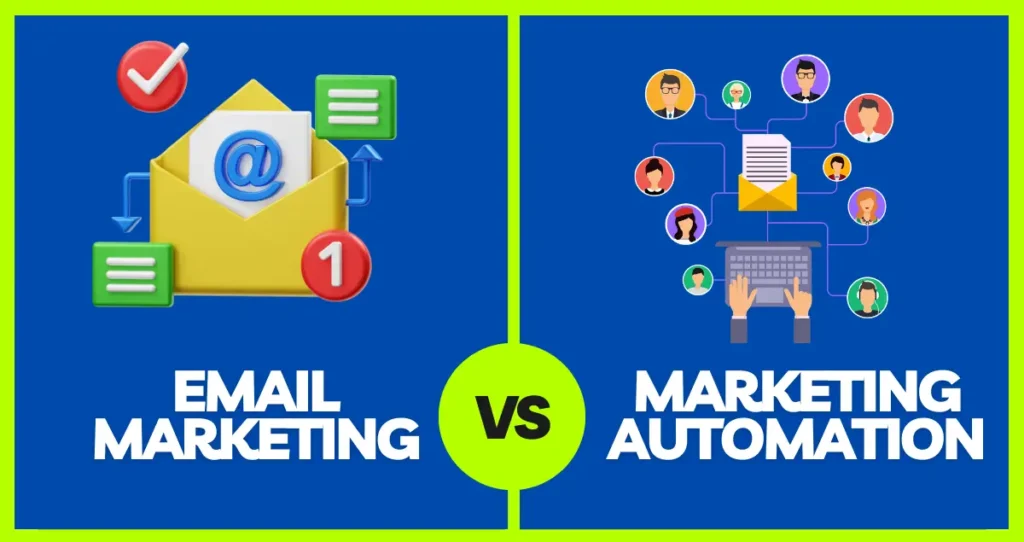Colors are present in the world all around us. They shape how we feel and what we’re in the mood for and sometimes affect our decision-making. The colors used in marketing can affect what customers think about a brand. Designers and marketers describe the effect of colors on people’s choices as Color Psychology in Marketing. Thanks to this field, companies know how to choose colors to attract audiences and boost their sales. Using the proper colors can help your marketing become more interesting and memorable.
We believe in Rozi Academy that learning about color psychology greatly benefits any business. Using a logo allows businesses to compete better and win more customer confidence. This article introduces the main points of color psychology and explains ways marketers can profitably use colors.
What does Color Psychology mean?
It examines the impact colors have on people. Colors can cause us to feel different ways inside. Red can trigger a sense of excitement or have a sense of urgency. Often, blue gives a sense of security and calmness. With this understanding, marketers work on logos, ads and websites that aim to make people feel certain emotions.
Colors impact the way people see the products and services consumers offer. You are more likely to capture a customer’s attention if the colors represent your brand’s message. Because color and emotion are linked, marketers take care when selecting color schemes for marketing. It helps to develop the overall brand look and what people remember most.
What Role Does Color Play in Marketing?
People tend to notice a brand’s colors before anything else. They support efforts to make a brand well-known and admired by customers. Color significantly influences a person’s first feelings about a product. This demonstrates that using color wisely is essential in marketing.
Using the right colors can help to raise the confidence of buyers. For instance, using trusted shades of blue can make people more likely to purchase financial services. Orange and yellow colors help you highlight sales and special prices. Once marketers know the significance of color, they can direct clients to respond.
Along with feelings, the right colors are essential for helping your brand seem different from others. Brands that use a specific color often are easier for people to notice. For example, Coca-Cola with its red and Facebook with its blue. Because of these colors, customers are more likely to remember the company.
Unlock the power of color in your marketing today! Get started!
The Meaning Behind Common Marketing Colors
Different colors represent different things. Check out these typical marketing colors and the effects they are known for:
- Red: Red is known to be lively and gutsy. It helps make the period quickly approaching seem exciting. It can be found in most clearance sales or among known food brands. Red may help customers feel hungry and encourage people to buy quickly.
- Blue: Blue represents peace and honesty. Many firms in the tech industry and financial services turn to this technology. Blue makes a brand appear reliable and secure.
- Yellow: Yellow attracts eyes and makes people feel positive. Gold often stands for happiness and a feeling of coziness. But using too many yellows can make a space feel jittery, so it’s better as an accent.
- Green: Green stands for growth, health and the natural world in the color system. Eco-friendly and health brands both use such materials a lot. Green promotes peace and harmony in any room.
- Orange: The color orange mixes energy with friendliness. It increases excitement and makes us more creative. Orange is a color many startups choose to seem open and inventive.
- Black: The use of black in interior design represents elegance and great value. White stands for simplicity and for being clean. They are usually employed together to achieve a harmonious and current effect.
Brands pick their colors with care to show the correct message. We aim to ensure the color fits the brand’s character and what our customers look for.
Ready to make your brand unforgettable? Discover how color can help! Get started today!
How to Use Color Psychology Effectively in Marketing
Color psychology works well when you first understand your customers and what your company stands for. Here’s how to make the most of color when marketing:
1. Know Your Brand Personality
Your colors ought to represent the beliefs and tone of your brand. A playful brand for children uses happy, bright tones in its designs. A law firm usually opts for dependable and severe tones.
2. Consider Your Target Audience
Color responses can vary significantly from one group to another. A person’s age, sex and the culture they come from influence their choice of color. Young people often respond to intense, bright colors, while older people are drawn to gentler and quieter color schemes.
3. Test Your Colors
Testing your colors is a good way to ensure your audience likes them. Altering a shade by just a little can lead to new customer behavior. Showing customers different versions of a website or ad shows what is more effective.
4. Use Color Combinations Wisely
Colors can either suit or oppose one another. Used combined colors that contribute to the overall balance. Using lots of bright colors can confuse customers and make them look casual.
5. Think About Context
Interpretations of colors depend on the culture they belong to. In a few nations, white represents purity, yet in others, it stands for mourning. Recognize cultures that differ from your own when building your global marketing campaigns.
Marketers can build campaigns that get noticed and touch the emotions of their audience by practicing these suggestions.
Boost your sales with wise color choices—learn more now!
Role of Color in Digital Marketing and Website Design
Color impacts both the experience users have and the conversion rate in digital marketing. Sites with attractive and easy-to-see color schemes hold visitors’ attention longer. They also show users how to purchase or sign up.
People are more likely to remember your brand when colors are used similarly, from your website to social media to advertising. If customers notice the same colors everywhere, they think of those colors when they see the brand. When advertising remains similar, it becomes easier for people to believe and remember it.
Colors are used to arrange and order the content available on the website. For example, placing colorful buttons against a subdued background makes action buttons stand out. Websites are more straightforward to navigate when colors are easier to tell apart.
A lot of successful brands do color research when developing their online presence. They change the colors to ensure they get the best engagement and sales.
Case Studies: Brands Leveraging Color Psychology
A few brands have taken advantage of color psychology to succeed in business.
- Coca-Cola: Coca-Cola uses red to show excitement and energy. The shade chosen suits the active character of the company. Red makes people more likely to buy something without overthinking.
- Facebook: Trust and calmness are promoted on Facebook with the use of blue. The color blue attracts many users and helps Facebook meet its promise to keep the platform protected.
- Starbucks: Starbucks uses green to stand for growth and nature. This color reflects the company’s priorities on saving the environment and selling healthy items.
The success of their marketing and the image customers have depend on their color choices.
Transform your marketing strategy with expert color psychology tips. Contact Rozi Academy today!
About Rozi Academy
Rozi Academy offers digital services from its base in the United Kingdom. They specifically help businesses with digital marketing, virtual assistance and business automation. Innovative digital marketing strategies from Rozi Academy can help companies expand their internet business. They show their clients how to take advantage of SEO, the design of a website and the effects of colors. Getting expert advice allows companies to improve their connection with customers and also boost their sales. The main goal of Rozi Academy is to give businesses the tools and training necessary to succeed online.
Stand out in the market—let the color do the talking! Learn more now!
Conclusion
Marketing relies heavily on colors to send messages. Color plays a role in helping businesses reach their audience emotionally. The color you use can either encourage or discourage people from purchasing. The appropriate colors for your company help establish your brand, make customers trust you more and raise your sales. Color meanings should be understood by marketers, who should also test their choices cautiously. Sticking to the same colors on all your marketing materials makes your brand well-known.
Adopting principles of color psychology helps businesses decide on wiser marketing strategies. They can draw in suitable customers and ensure those customers have fun. Color shouldn’t be seen only as decoration; it’s a key element for making your marketing campaigns thrive.
Want to master marketing? Start with the right colors! Reach out to Rozi Academy today!







